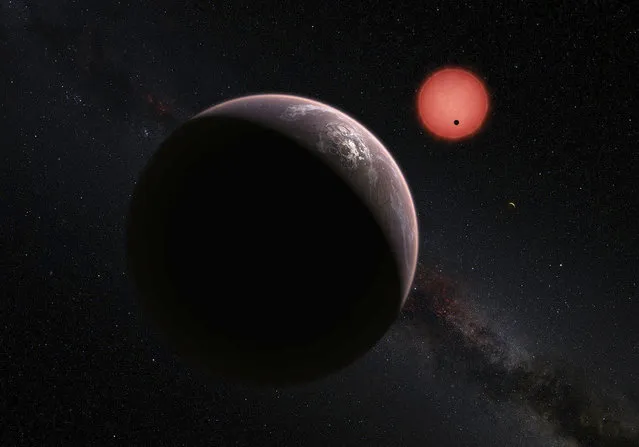
An imagined view of the three planets orbiting an ultracool dwarf star TRAPPIST-1 and its three planets just 40 light-years from Earth discovered using a specialist telescope at ESO's La Silla Observatoryin Chile. (Photo by N. Risinger/M. Kornmesser/Reuters/ESO)
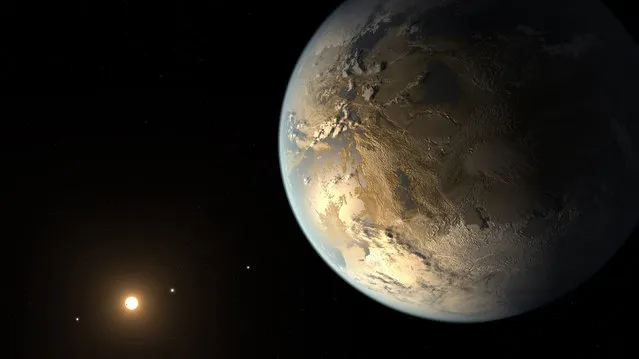
The planet Kepler-186f, the first validated Earth-size planet to orbit a distant star in the habitable zone, which is a range of distance from a star where liquid water might pool on the planet's surface. The discovery is the closest scientists have come so far to finding a true Earth twin. The star, known as Kepler-186 and located about 500 light years away in the constellation Cygnus, is smaller and redder than the sun. (Photo by Reuters/NASA/JPL-Caltech)
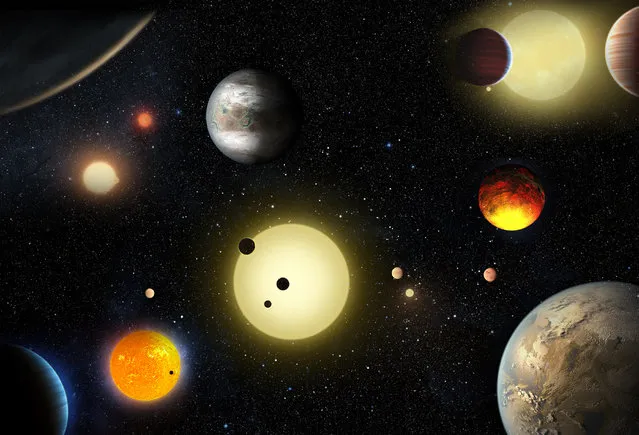
An artist's concept depicts select planetary discoveries made so far by NASA's Kepler space telescope. (Photo by W. Stenzel/Reuters/NASA)
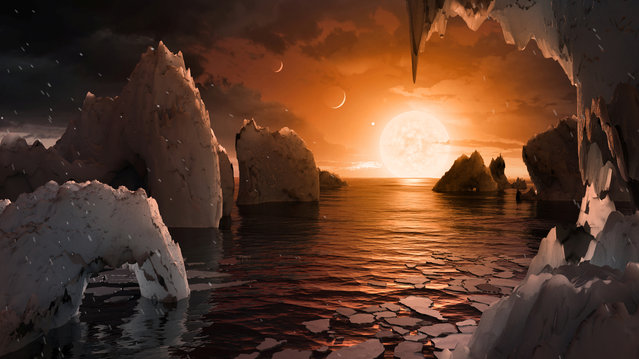
The possible surface of TRAPPIST-1f, one of seven newly discovered planets in the TRAPPIST-1 system that scientists using the Spitzer Space Telescope and ground based telescopes have discovered. (Photo by Reuters/NASA/JPL-Caltech)
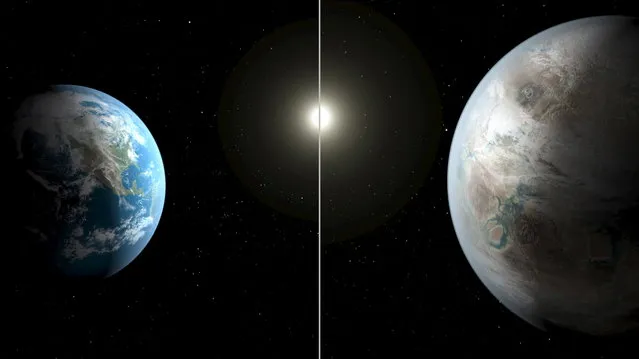
An illustration compares Earth to a planet beyond the solar system that is a close match to Earth, called Kepler-452b. The planet, which is about 60 percent bigger than Earth, is located about 1,400 light years away in the constellation Cygnus. (Photo by T. Pyle/Reuters/NASA/Ames/JPL-Caltech)
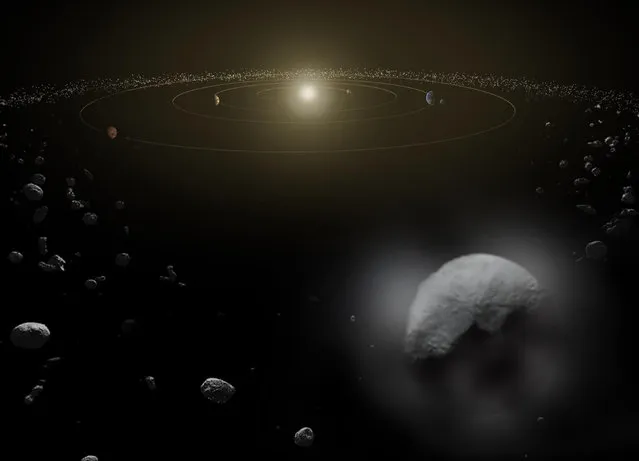
Dwarf planet Ceres is seen in the main asteroid belt between the orbits of Mars and Jupiter. Ceres, one of the most intriguing objects in the solar system, is gushing water vapor from its frigid surface into space, in a finding that raises questions about whether it might be hospitable to life. (Photo by Reuters/NASA/ESA)
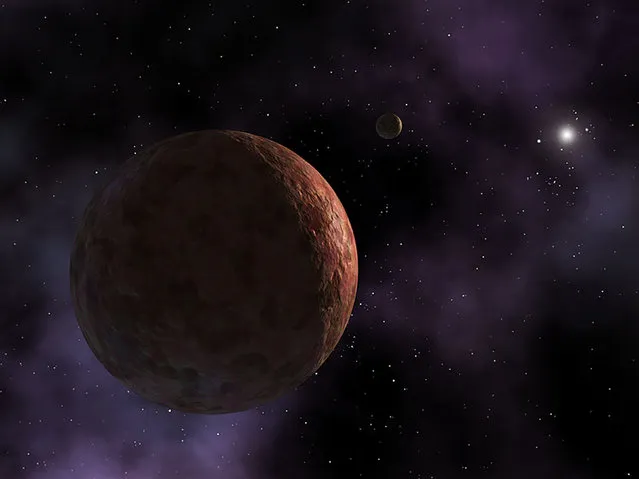
A planet-like object dubbed Sedna, a small icy body far beyond Pluto and the Kuiper Belt, a discovery that calls into question exactly what was going on during the early days of the solar system. (Photo by Reuters/NASA/JPL-Caltech)
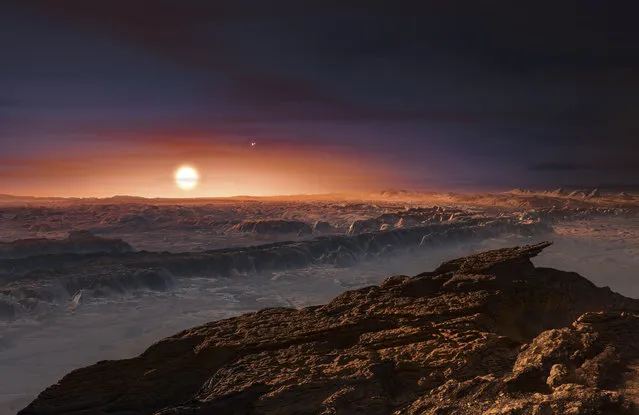
A view of the surface of the planet Proxima orbiting the red dwarf star Proxima Centauri, the closest star to our Solar System. (Photo by M. Kornmesser/Reuters/ESO)
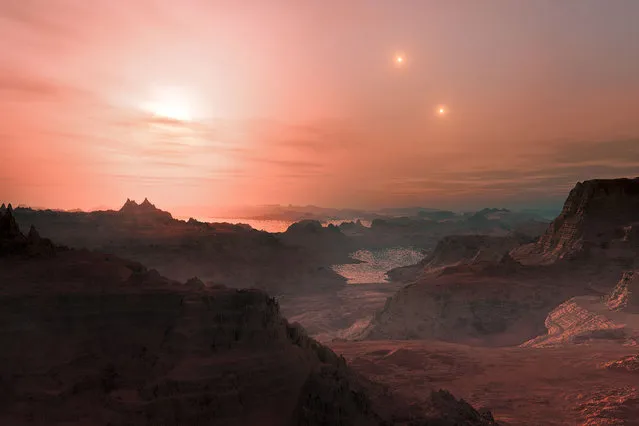
An artist's impression shows a sunset seen from the super-Earth Gliese 667 Cc. Astronomers have estimated there are tens of billions of such rocky worlds orbiting faint red dwarf stars in the Milky Way alone. (Photo by L. Calcada/Reuters/ESO)
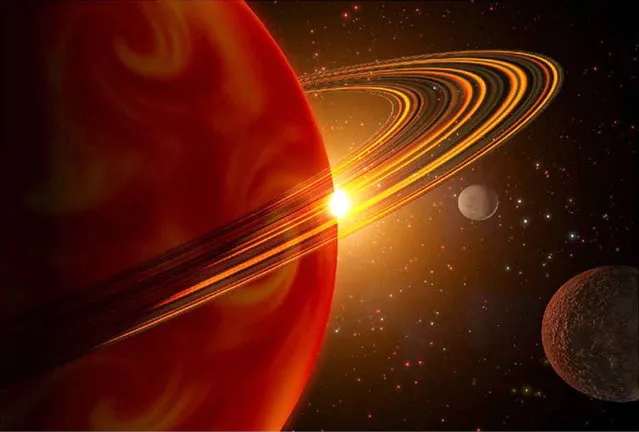
A view of a Saturn-sized planet orbiting 79 Ceti. (Photo by Reuters/Stringer)
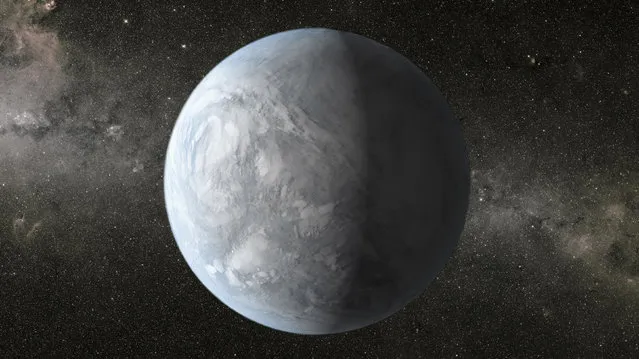
An artist's depiction of Kepler-62e. The super Earth-size planet is in the habitable zone of a star smaller and cooler than the sun, located about 1,200 light-years from Earth in the constellation Lyra. (Photo by Reuters/NASA Ames/JPL-Caltech)
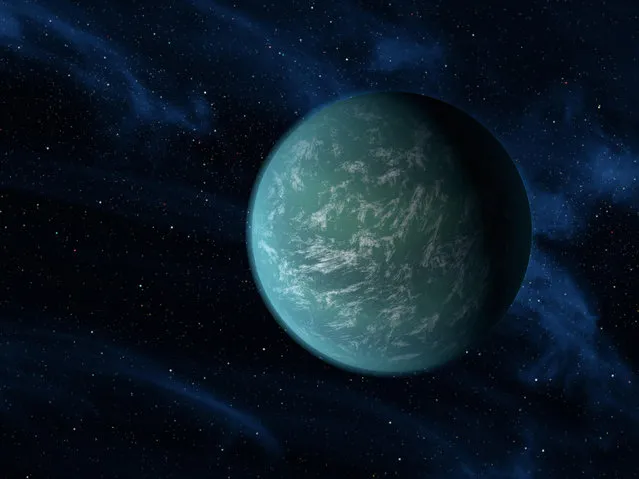
Kepler-22b, the most Earth-like planet ever discovered, is circling a star 600 light years away. It is the smallest and the best positioned to have liquid water on its surface – among the ingredients necessary for life on Earth. (Photo by Reuters/NASA/Ames/JPL-Caltech)
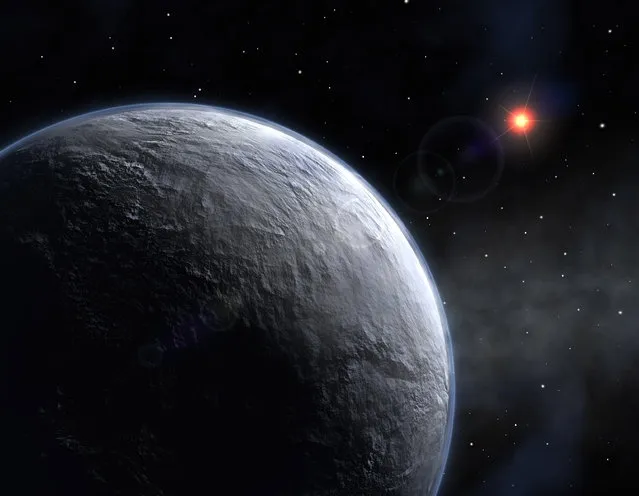
A newly discovered planet, designated by the unglamorous identifier of OGLE-2005-BLG-390Lb, orbits a red star five times less massive than the Sun and located at a distance of about 20,000 light years. (Photo by Reuters/ESO)
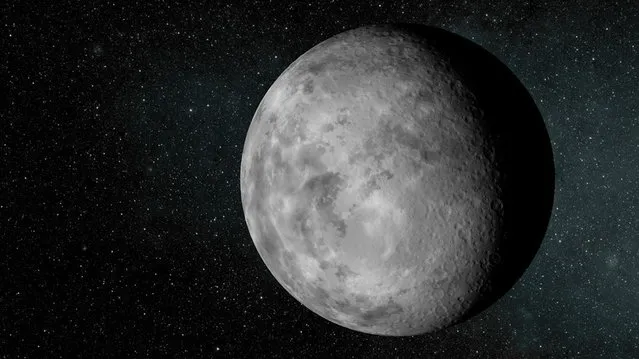
An artist's conception of the tiny new planet Kepler-37b, which is slightly larger than Earth's moon and orbits its host star every 13 days. It likely has a surface temperature of in excess of 400C (700F). Astronomers don't think the tiny planet has an atmosphere or could support life as we know it, but the moon-size world is almost certainly rocky in composition. (Photo by Reuters/NASA/Ames/JPL-Caltech)
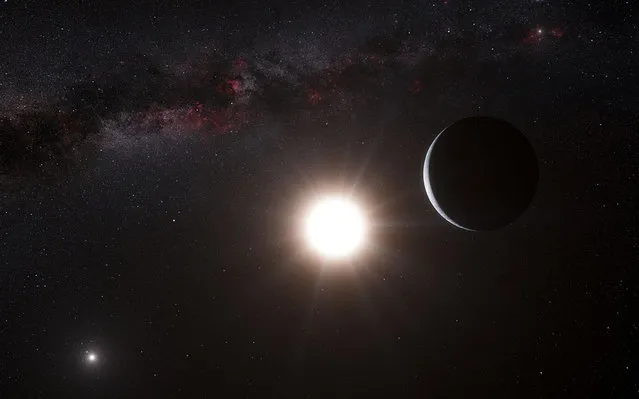
An artist's impression shows the planet orbiting the star Alpha Centauri B, a member of the triple star system that is the closest to Earth. Our own Sun is visible to the upper right. (Photo by Reuters/ESO)
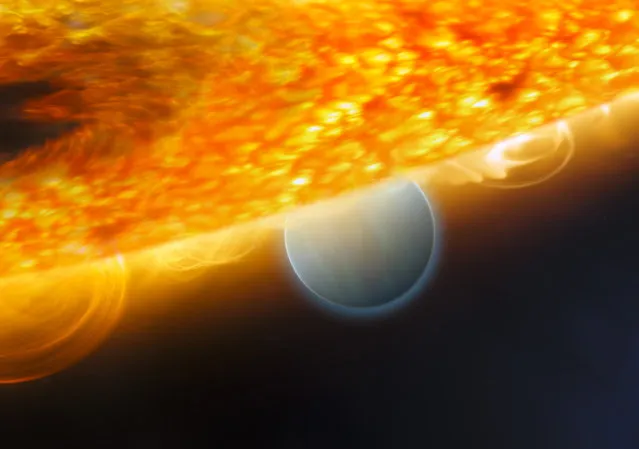
The Jupiter-size extrasolar planet, HD 189733b, being eclipsed by its parent star. The planet is a “hot Jupiter”, so close to its parent star that it completes an orbit in only 2.2 days. (Photo by M. Kornmesser/Reuters/ESA/NASA)
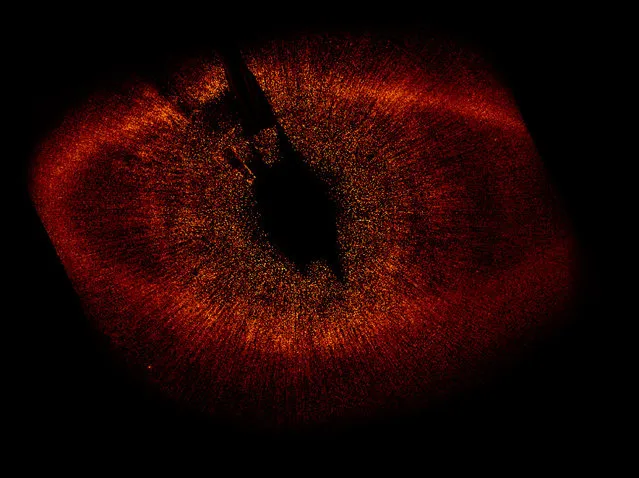
The first visible-light snapshot of a planet circling another star. Estimated to be no more than three times Jupiter's mass, the planet, called Fomalhaut b, orbits the bright southern star Fomalhaut, located 25 light-years away in the constellation Piscis Australis, or the “Southern Fish”. (Photo by P. Kalas, J. Graham, E. Chiang, E. Kite (University of California, Berkeley), M. Clampin (NASA Goddard Space Flight Center), M. Fitzgerald (Lawrence Livermore National Laboratory), and K. Stapelfeldt and J. Krist (NASA Jet Propulsion Laboratory)/Reuters/NASA/ESA)
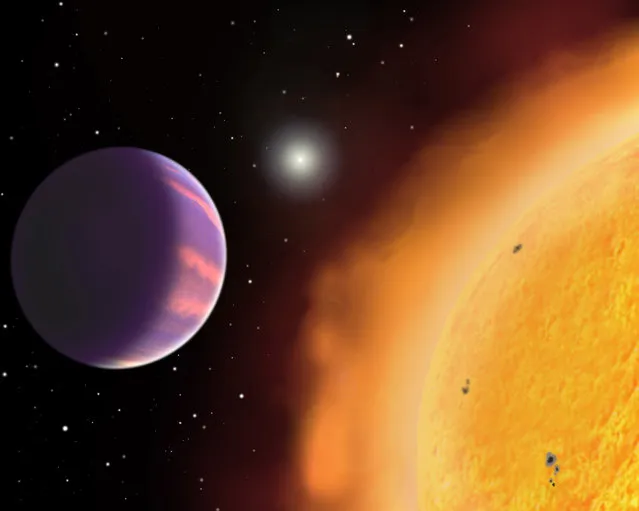
A baffling planet, known as HAT-P-1, that is much larger than theory predicts. The planet has a radius about 1.38 times Jupiter's but contains only half Jupiter's mass. (Photo by David A. Aguilar/Reuters)
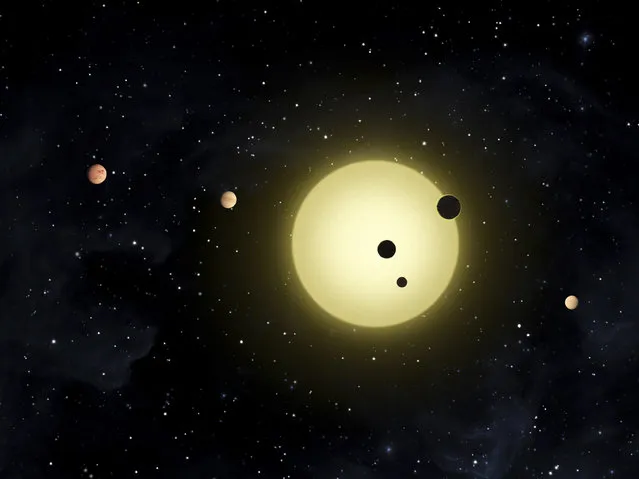
Kepler-11, a sun-like star around which six planets orbit. At times, two or more planets pass in front of the star at once, as shown in a simultaneous transit of three planets. (Photo by Tim Pyle/Reuters/NASA)
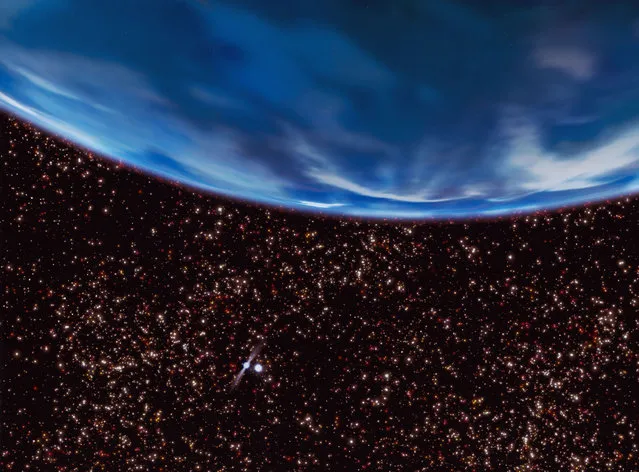
A rich starry sky fills the view from an ancient gas-giant planet in the core of the globular star cluster M4. The 13-billion-year-old planet orbits a helium white-dwarf star and the millisecond pulsar B1620-26, seen at lower left. The globular cluster is deficient in heavier elements for making planets, so the existence of such a world implies that planet formation may have been quite efficient in the early universe. (Photo by Reuters/NASA)
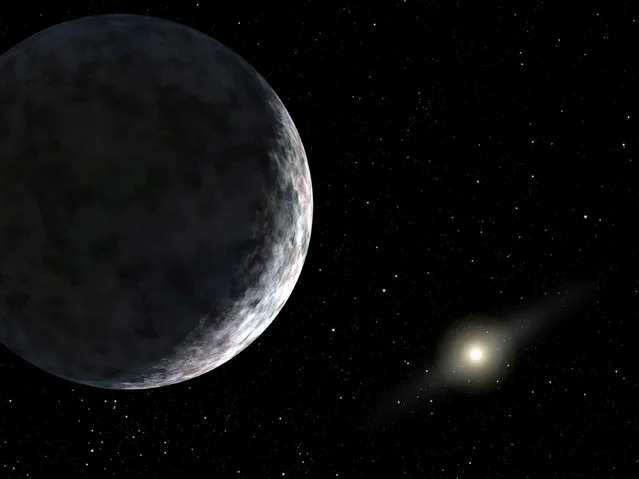
Planet 2003UB313, the most distant object ever detected orbiting the sun, at the lonely outer fringes of our solar system. Our sun can be seen in the distance. The planet is at least as big as Pluto and about three times farther away from the Sun than Pluto. (Photo by Reuters/NASA/JPL-Caltech)
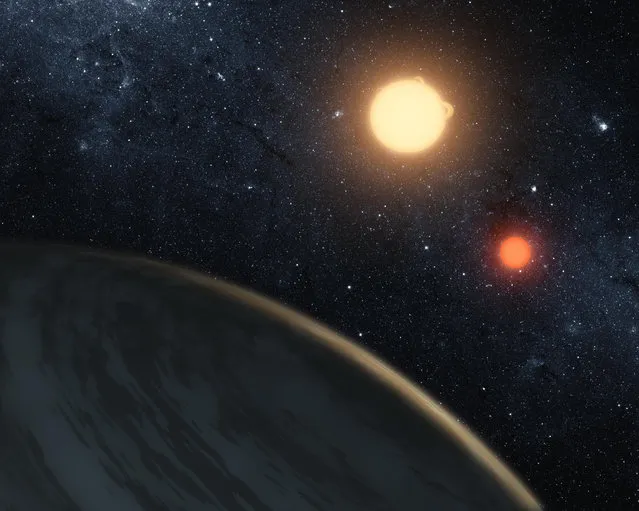
The circumbinary planet Kepler-16b – the first planet known to definitively orbit two stars. The cold planet, with its gaseous surface, is not thought to be habitable. The largest of the two stars, a K dwarf, is about 69 percent the mass of our sun, and the smallest, a red dwarf, is about 20 percent the sun's mass. These star pairs are called eclipsing binaries. (Photo by T. Pyle/Reuters/NASA/JPL-Caltech)
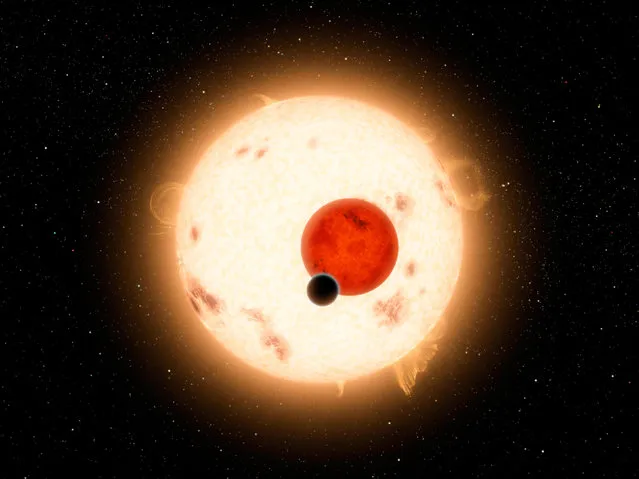
The planet Kepler-16b with its two stars. The cold planet, with its gaseous surface, is not thought to be habitable. The largest of the two stars, a K dwarf, is about 69 percent the mass of our sun, and the smallest, a red dwarf, is about 20 percent the sun's mass. (Photo by R. Hurt/Reuters/NASA/JPL-Caltech)
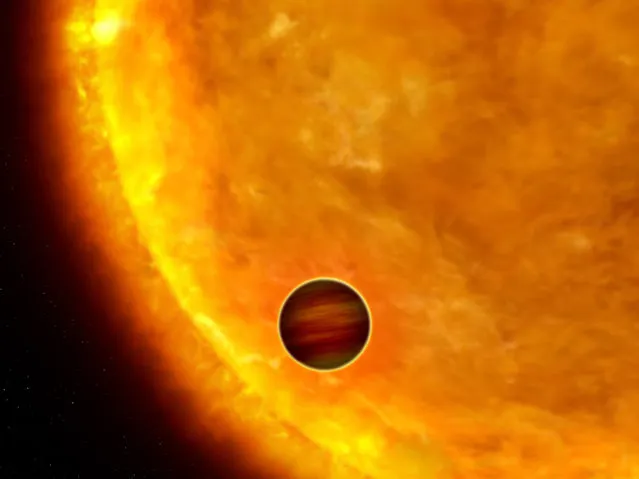
A Jupiter-sized planet passing in front of its parent star. Such events are called transits. When the planet transits the star, the star's apparent brightness drops by a few percent for a short period. (Photo by G. Bacon/Reuters/NASA/ESA)
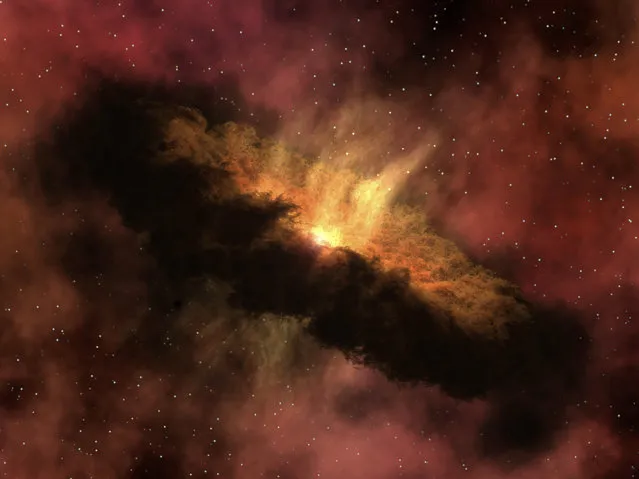
A fledgling solar system containing deep within it enough water vapor to fill all the oceans on Earth five times, located in our Milky Way galaxy about 1,000 light years from Earth in the constellation Perseus. (Photo by Reuters/NASA/JPL-Caltech)
07 Mar 2017 00:02:00,
post received
0 comments
